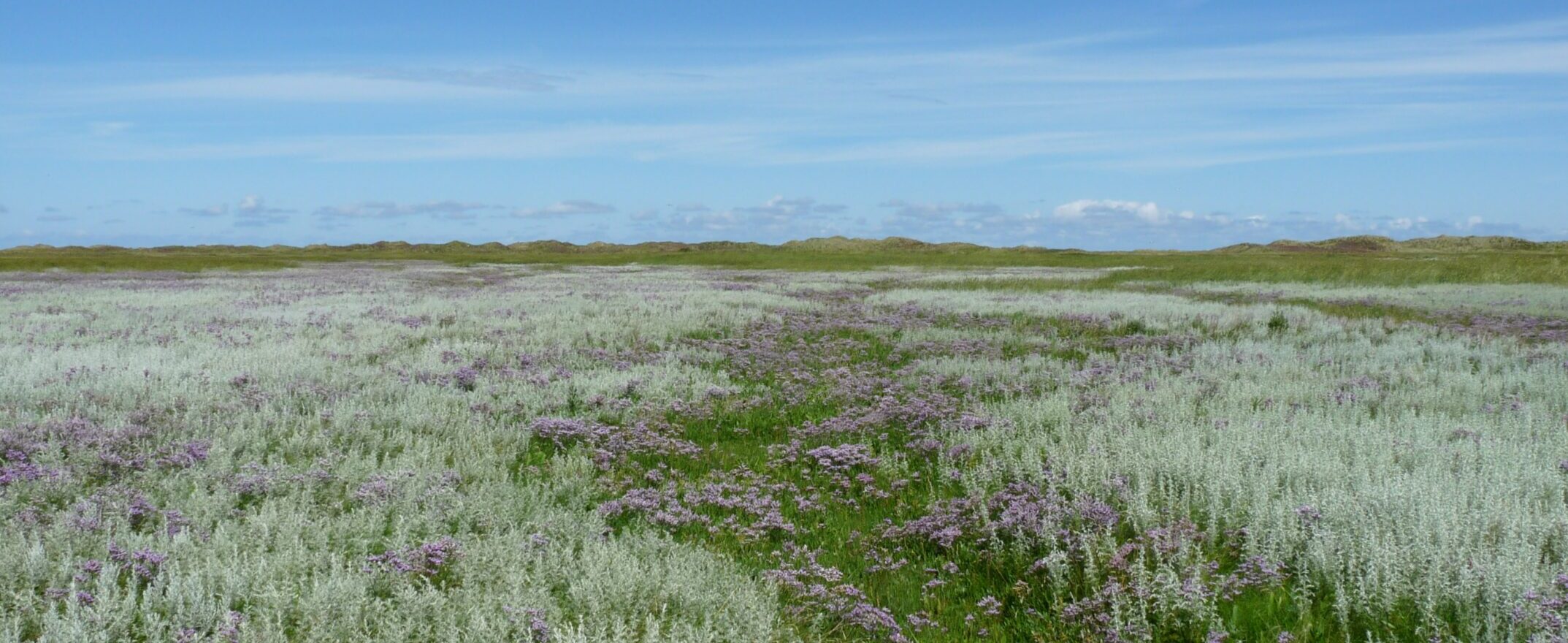The nature of Schiermonnikoog is very rich and diverse. On a small surface you’ll find a lot of different landscapes: from the mudflats to the dunes and from the forest to the Westerplas. In every landscape different kinds of animals and plants find a place to live.
Mudflats

With their always moving waters, their always changing skies, their smells and sounds, their birds and their overwhelming vastness, the mudflats never fail to enchant visitors. Large parts of the bed of the Wadden Sea south of Schiermonnikoog run dry at low tide: the mudflats appear. On and in these tidal flats life is ubiquitous.
The bottom of the Wadden Sea contains many nutrients because in the shallow water a lot of organic material settles down.
Seabed-creatures like worms and shellfish ‘eat’ this organic material and the many birds on the mudflats eat the seabed-creatures in turn.
Salt marsh
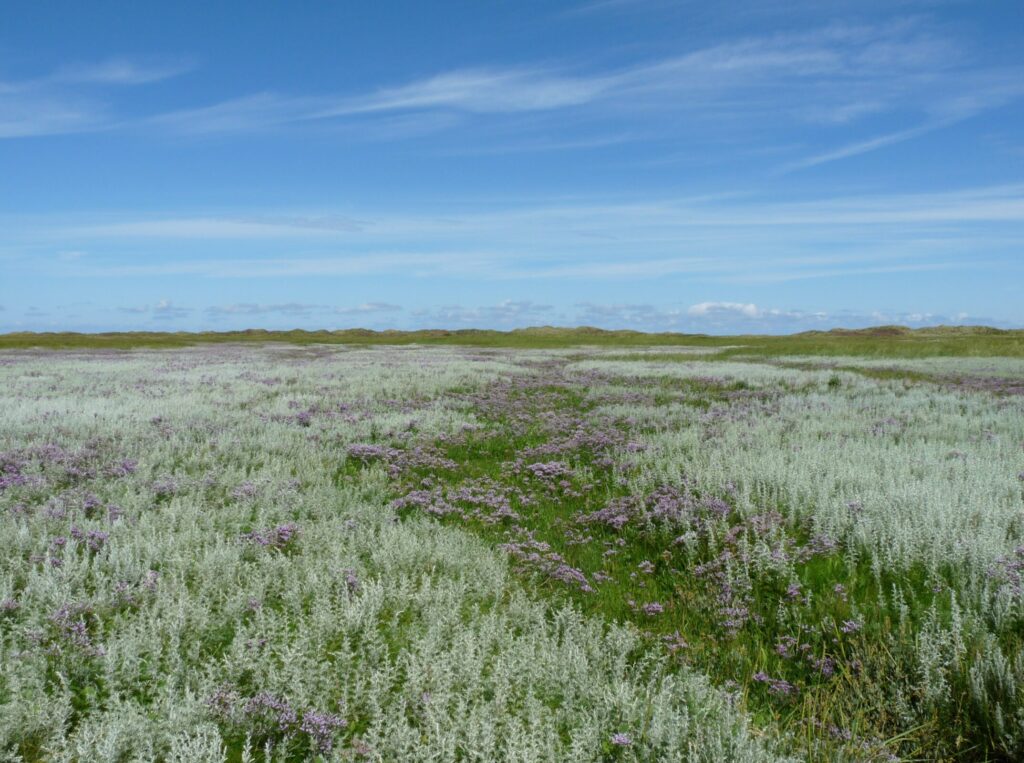
The salt marshes are on the south side of the island. Salt marshes develop because of land accretion on the edges of the Wadden Sea. Tidal flats become higher because of the layers of silt that stay behind after every high tide. When the tidal flat has become high enough, algae and salt marsh plants start growing there; they retain even more silt.
On the parts of the salt marshes that are overflown daily, pioneer plants grow, like glasswort and cordgrass.
The higher parts of the salt marshes get flooded only when the tide is extremely high. They are characterized by plants like sea lavender, sea wormwood and sea thrift. The Oosterkwelder developed largely after 1850. In the past, there were salt marshes on the western side of the island as well. After the building of the Wadden dike these have been transformed into farmland: the Banck’s polder. In the last two decades the southwestern point of the island, Het Rif, has transformed into a large saltmarsh area.
Beach
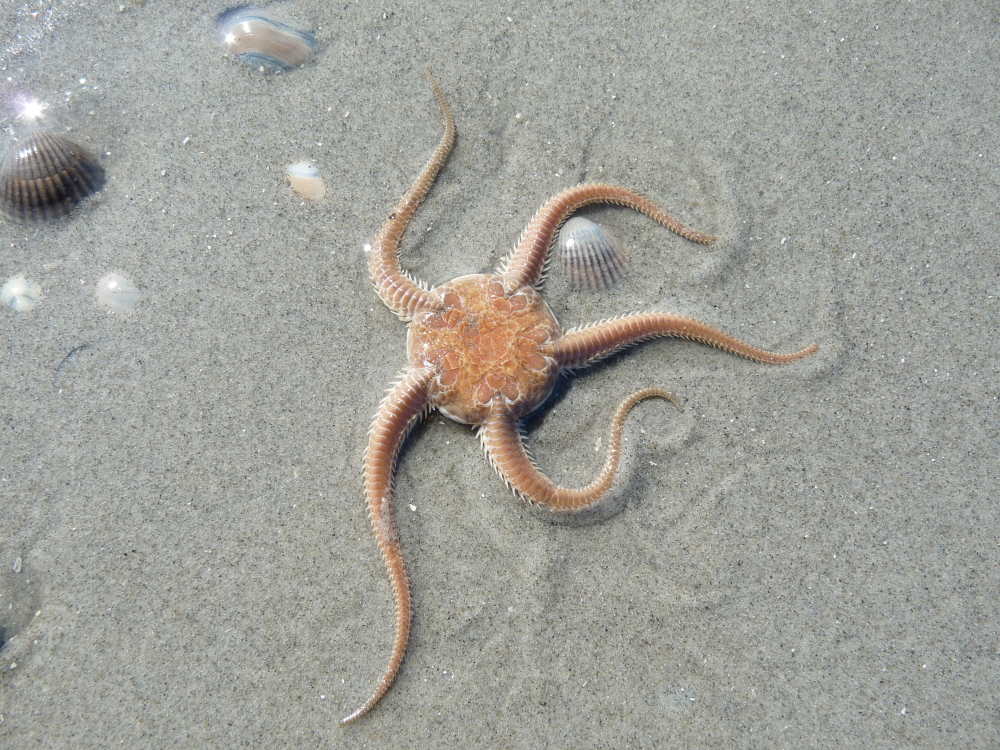
Schiermonnikoog has one of the broadest beaches of Europe. On some places you have to walk more than 1 kilometre from the dunes to the sea. On the shoreline you can find all sorts of jetsam, dependant on the force and direction of the wind: shells, trumpet worms, seaweed and sometimes even starfish. Birds are foraging along the waterline; among them are distinct species of gulls, oystercatchers and sanderlings. The most spectacular finds are being washed ashore on the eastern side of the island.
That’s where deep channels run near the coastline.On the western side of the island a large sandbank is located near the coast. Here the current is slowed down. Because of this, the beach starts looking like a mudflat, complete with lugworms and glasswort.
Dunes

On the beach of Schiermonnikoog you can observe how dunes come into being: the wind creates small sand heaps on the beach, rush grass and marram grass start growing there, they steady the sand with their roots and trap extra sand: the sand heap becomes a small dune. Many small dunes disappear in winter during a storm.
Many extraordinary plants grow in the dunes of Schiermonnikoog. In spring the dune valleys get a pink hue because of the many orchids. In August they are full of grass-of-Parnassus. In autumn there are berries everywhere, as well as birds that are eagerly eating them.
Rabbits also live in the dunes, but their number has declined dramatically in the last decades. Two different diseases have taken their toll. The consequences are big: many sprouts that in the past were eaten by the rabbits now have the opportunity to grow and become a shrub or a tree. The dunes of Schiermonnikoog become increasingly overgrown and rare dune plants become endangered. Grazing animals are introduced to make and to keep the dunes more open.
Woods
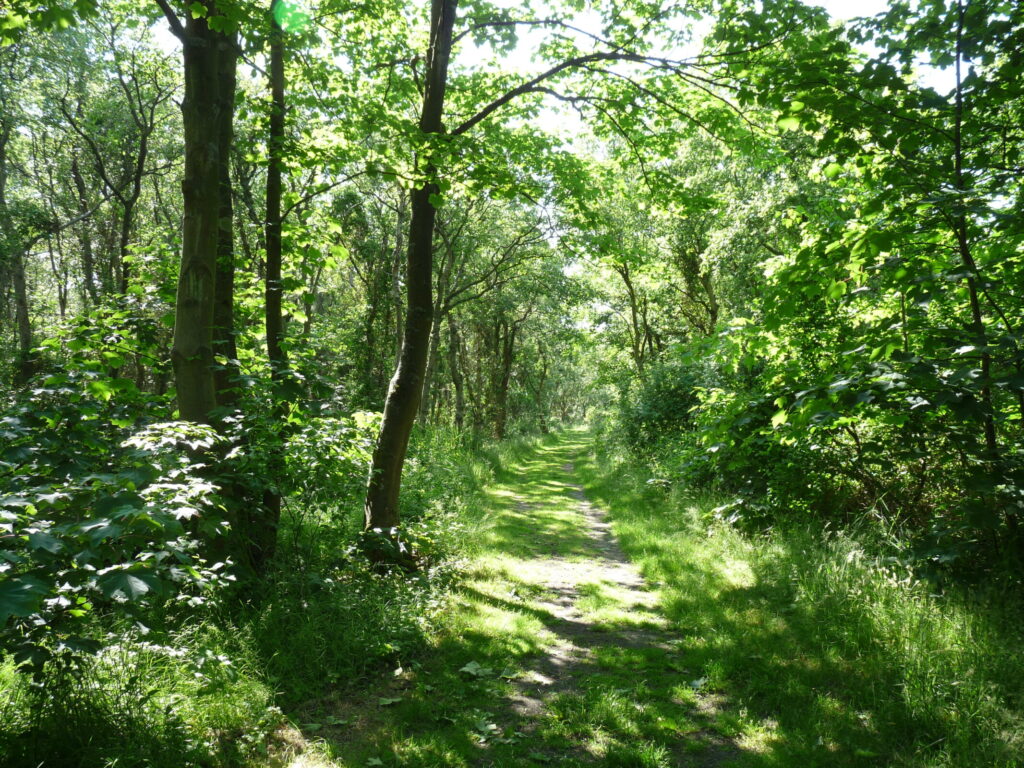
The woods on Schiermonnikoog are partly coniferous – these woods were planted – and partly deciduous – these woods are natural. In the beginning of the last century the Von Bernstorff family planted pine forests on the island, with an eye on timber production. The trees didn’t grow very well though and maintenance of the forests was quickly abandoned. On the western side of the island, you can observe how the salty wind ‘shaves’ the trees and makes them grow crooked.
In the lee of these pine forests deciduous woods developed, mainly consisting of birches. This birch forest is still expanding. A lot of birds breed in the woods of Schiermonnikoog, from all kinds off songbirds to sparrow hawks and long-eared owls.
Westerplas
The Westerplas is a freshwater lake. Until the beginning of the 1960s, this area was a salt marsh, the Westerkwelder, which was regularly flooded by the Wadden Sea. In 1964 the salt marsh was isolated from the sea: the Westerplas came into existence. Nowadays the Westerplas is the most important freshwater area of the island.
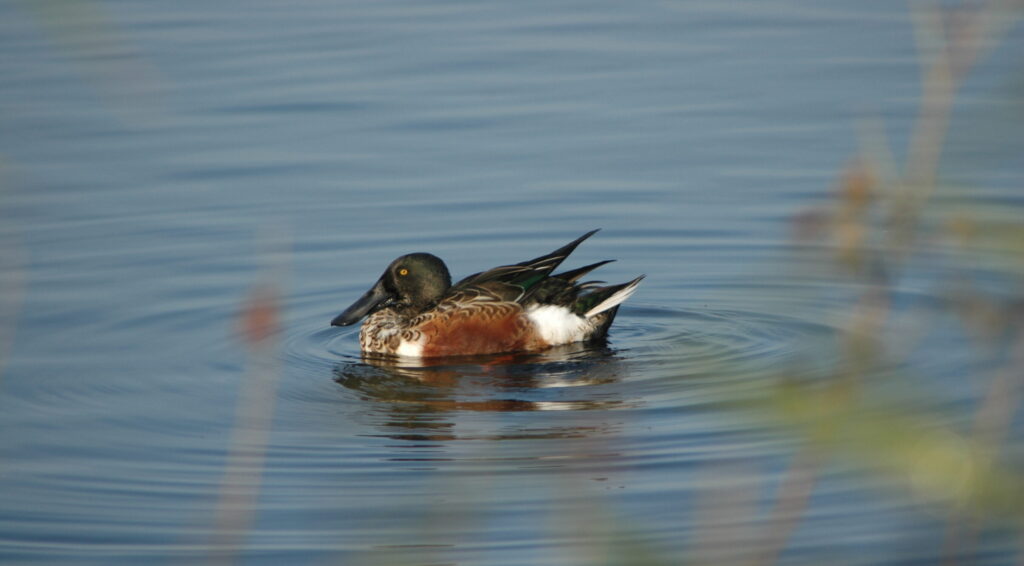
You’ll see a lot of birds on and around the Westerplas, because of the presence of fresh water. Ducks and geese, of course, several kinds of reed birds, and spoonbills, which breed here. For us, humans, the Westerplas is important as well; a large part of the drinking water on Schiermonnikoog is extracted from this area.

